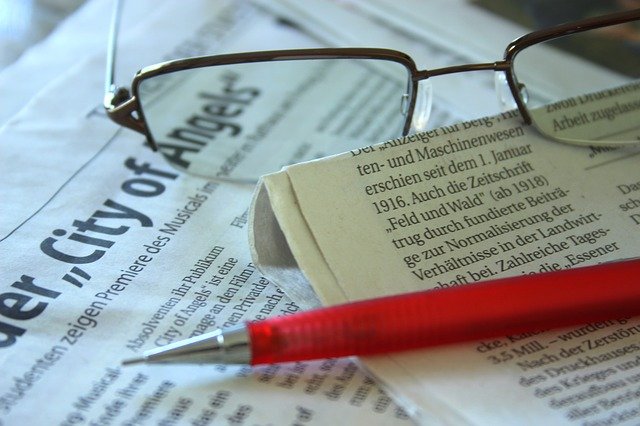Opinion article: what it is, main features, structure and writing keys
Contents
What is an opinion article?
It is a type of journalistic text that is part of the non-literary texts that is mainly characterized by its argumentative and persuasive nature. That is to say, it is a type of text that expresses a position through a series of evaluations, analyses and specific points of view in relation to an event or topic of public interest. It is often a text written by a recognized personality, which has the capacity to influence or influence the opinion of the readers.

One of its main characteristics has to do with the variety of topics about which it is possible to write. Although current issues are the ones that attract the attention of the reading public, the truth is that there are also other relevant topics that have been developed over time and that continue to be relevant at the present time. The basis of their writing is centered on the importance of sharing the opinion and arguments considered by the author.
Main characteristics of the opinion article
Below we will see a series of aspects that allow us to identify this type of journalistic texts, as well as to distinguish them from others of the same nature. These are the most important characteristics of the opinion article:
Main objective
We begin with the formulation of the objective of the opinion article. The purpose of this type of text is to express a position through a series of evaluations, judgments and analyses about a specific topic or fact that is of public interest. This text also seeks to guide or directly influence public opinion.
Topic requirements
In order to determine whether or not an opinion article can be published, it must meet several key conditions. Among them, it must deal with a topic that is current, that has importance within the context and public interest, and that the specific medium considers pertinent to deal with. As for the type or specific topic, this can be varied, being of a political, economic, cultural, etc. nature.
Independence of criteria
This is a very important aspect when reviewing this type of text, since the opinion article often tends to have an independence of criteria in relation to the editorial line of the media in which it is published. Thus, generally, most of those who write them tend to share it and reinforce its dissemination.
Unlike other types of texts, the opinion article is also characterized by the fact that it has an author who is identified at the end of the article. In addition, it is regularly written by a well-known personality in the field, either because of his or her direct participation in some discipline, prestige, credibility or importance in the ability to influence the reading public.
Clear and simple language
Since it is a type of text that addresses a wide audience, it should be easily understood by readers. That is why the opinion article is composed of simple, clear and concise language through which both the information and the arguments that defend the position expressed are offered and that the reader can understand with great simplicity due to the use of the language used.
Structure of the opinion article
Although the structure may often vary according to the format or the parameters offered by the publication medium, this type of text usually has a defined outline used most of the time for the writing of its information. Thus, we can identify the following structure:
Title of the article
In this first part, which is present in all texts of this type, there is a title that, through a short and concise statement, allows the reader to have a first approach to the subject that the opinion article will deal with. It is important that this brief and precise title addresses the content of the article and is striking for the reader.
Introduction
The introduction plays a very important role in addition to being the first most important part of the article, since it is oriented to anticipate the information that will be developed in depth in the content of the article. That is why this section should include the main ideas about the topic, seeking to retain the reader’s attention to introduce, as its name says, the bulk of the information.
Body of the article
This is the most extensive part of the article in which the author begins to develop in an organized manner and following up on his ideas, analyses and arguments that shape his position on the topic. Here the main ideas towards the subject of the article should begin to be exposed and dealt with, the arguments are developed and contrasted with ideas that may be against in order to defend the ideas that make up the author’s position. A careful analysis should be made to provide credibility to the information provided.
Conclusion
In the final part of the text it is necessary to make a brief summary of the content that allows to respond to the ideas raised and the position justified in the body of the opinion article. In this way, the conclusion must coincide with the resolution reached by the author after his analysis and, subsequently, present the specific thesis or opinion defended. In this section it is possible to add recommendations or ideas that may guide the reader to take action.

Keys to write an opinion article
Now that we have seen the above, it is time to review some fundamental aspects that should be taken into account when writing this type of text, especially given the importance they have and the impact they can achieve. These keys are:
Topic of relevance
Although the topic may be recent or not, it is very important that the author or journalist focuses on dealing with a topic that is of interest to the public, that is, select a topic that is of interest in the sector and that to this extent may be relevant to readers who are encouraged to read it.
Following the structure
Although the author determines his own style in the document, it is important that the structure he determines allows him to go directly to the central point of the content, this implies following the basic structure of the opinion article.
First of all, the opinion or thesis that the author proposes for the development of the content should be stated. It is recommended to write without giving so many detours, to go to the main ideas that will gradually allow to reach the conclusions at the end of the text. This does not mean that literary resources cannot be used, but they must be arranged in such a way that they do not detract from the precision of the content.
Importance of research
It is very important that the journalist, prior to writing his opinion article, is responsible for seeking the necessary information during the research process, which allows him to offer a complete overview of the topic and thus, to present each of his assessments very well. Even if you have information on the subject, it is necessary to update that knowledge and be aware of new specialized references and news that may arise in order to offer information in real time.
Include the reader
To increase the impact that the text can have on the reading public, an efficient technique is to include the reader in the content or information presented. Involving the reader in the topic that is being developed allows a greater closeness with the ideas that are being presented, a retention of attention and a better understanding of the topic, since it is a fact that he/she may have lived, that affects him/her directly or indirectly, a person close to him/herself, and therefore, he/she may feel identified with what is being presented.
Argumentation of ideas
From the exposition of the thesis presented in the introduction of the document, it is necessary to start directly with the argumentation of the assessments made by the author. On this occasion it is necessary to deal with it from the explanation on which the opinion is built in relation to the topic that is being presented, and at the same time, the importance of talking about it. In this sense, it is necessary to use several argumentative and expository resources that allow to give an account of the ideas, strengthening and relying on data, references, quotations, records and others. Although it is a new approach, it is necessary that the perceptions have a starting point, this will be key in persuading the reader.
Follow-up of ideas
In the exposition of arguments, it is vital that the author verifies that each of the ideas he has exposed has reached its conclusion through the follow-up. This is essential because on many occasions the process and the incursion of ideas along the way can divert the reflection that should be reached for the thesis statement. Concluding the ideas that are raised will facilitate the understanding of the information for the reader and in this sense, build the way to reaffirm the position that is defended.
Include a proposal
Finally, after the development of the exposed content, it is very important that in the final part, after having raised the whole situation, the author provides a solution or proposal that leads to a way out. In this sense, the opinion article plans to go beyond criticism, as it tries to include alternatives or possible ways to improve such situation or issue that is conflictive, sustained and involves many more people.
Final revision
A text such as this may be subject to several revisions, which, in fact, are necessary to determine its publication. That is why the author should do several readings that first allow him/her to identify possible spelling or writing errors, followed by a reading that verifies the correct connection of ideas. A reading aloud will allow finding possible faults that can be corrected immediately, it is necessary to make the necessary modifications to guarantee the quality, coherence and cohesion of the text.
This is one of the most important journalistic texts in this field, if you want to learn more, remember that we have specialized sections by text types that you can browse to learn much more about all possible formats. Learn more about the world of literature.
